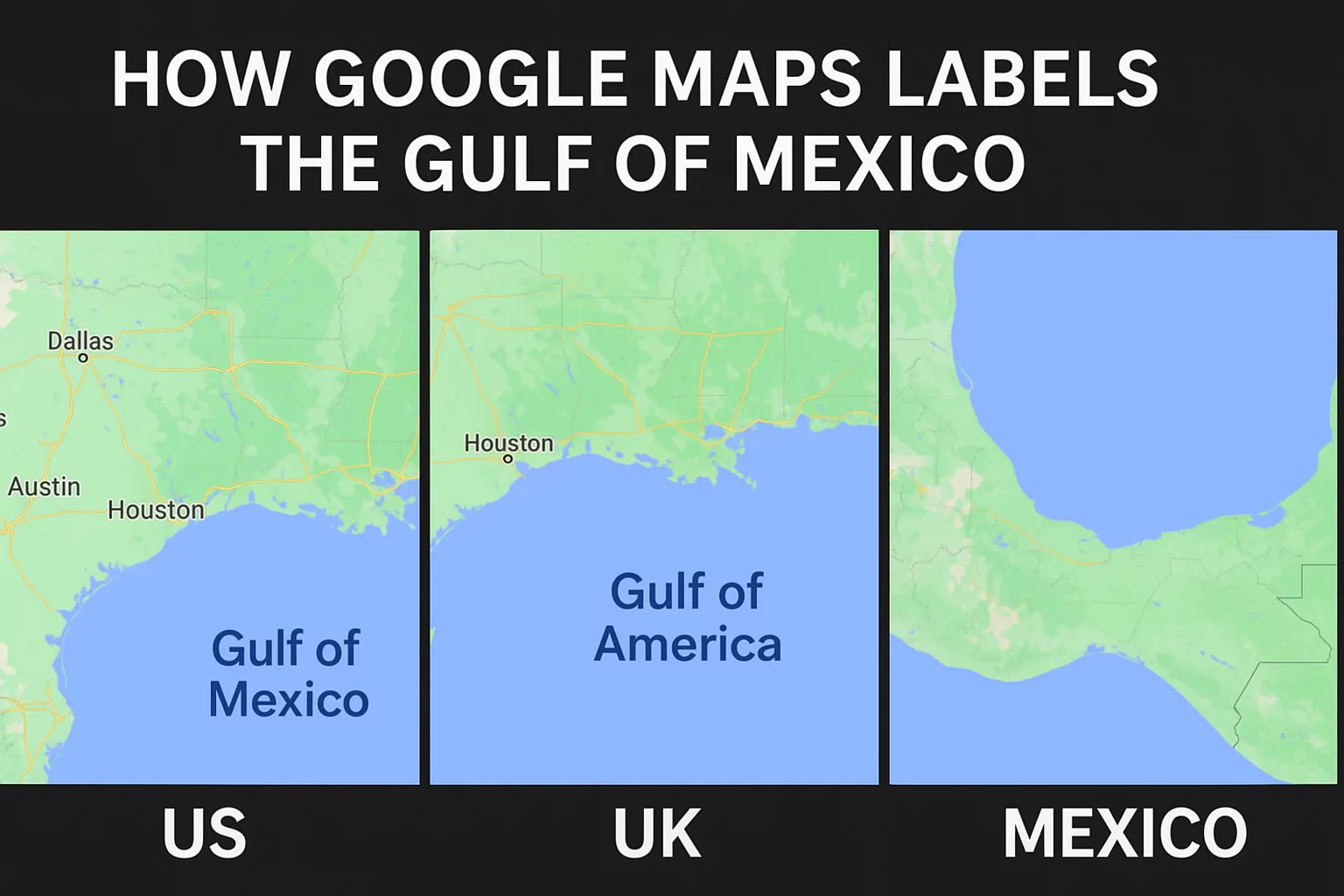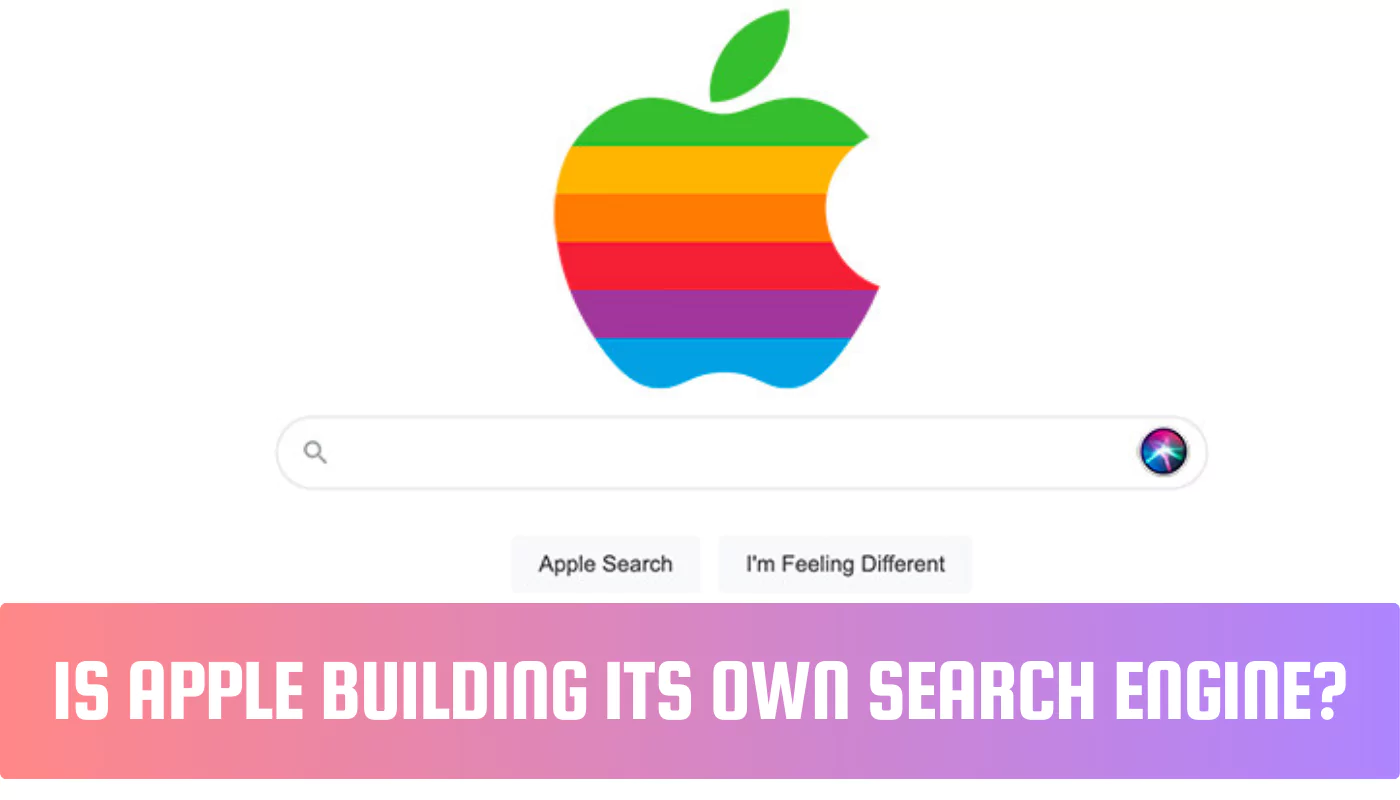How Google Maps Labels The Gulf Of Mexico (Gulf of America) In The US, UK & Mexico

Google Maps shows different labels for the Gulf of Mexico depending on your location. In the United States, the label reads “Gulf of America”, while in Mexico, it remains “Gulf of Mexico”. If you’re browsing from the UK or other countries, you’ll see both names combined as “Gulf of Mexico (Gulf of America)”. This regional label difference stems from a 2025 naming change pushed by the U.S. government, sparking global discussions and controversy.
Why Did Google Maps Change the Gulf’s Name in the US?
In January 2025, the U.S. government officially renamed the Gulf of Mexico to the Gulf of America for all domestic references. This change came through Executive Order 14172, signed by former President Donald Trump on his return to office. The order instructed U.S. agencies to update maps, documents, and geographic systems to reflect the new name.
As a result, Google followed suit by updating Google Maps for U.S.-based users to reflect the new term, aligning with the United States Board on Geographic Names (BGN) database.
Why Different Countries See Different Labels
Google uses geo-targeting to show labels that match the local language, political standards, and official records of each region. So here’s how it breaks down:
| Region | Label Shown on Google Maps |
|---|---|
| United States | Gulf of America |
| Mexico | Golfo de México (Gulf of Mexico) |
| United Kingdom / Global | Gulf of Mexico (Gulf of America) |
This localization is not unusual. Google often adapts its map labels for disputed territories, regional preferences, and geopolitical sensitivity. What makes this case unique is the political motivation behind the change.
Background: The Political Push Behind “Gulf of America”
The name “Gulf of Mexico” has been internationally recognized for centuries. However, during the 2024 presidential campaign, then-candidate Donald Trump criticized the name as “symbolic of globalist control” and promised to restore national identity in U.S. geographic naming.
On January 20, 2025, his Executive Order 14172 mandated the change. The reasoning was framed as a way to “celebrate American heritage and strength” and reduce foreign naming in domestic usage. Federal agencies were given 60 days to comply, affecting maps, educational materials, and navigation systems.
How Google Decides Which Names to Display
Google Maps does not create place names independently—it sources geographic data from:
- Authoritative government databases (like the U.S. BGN or Mexico’s INEGI)
- International standards (such as ISO or UN cartographic data)
- Local user feedback
- Partnerships with data providers (like OpenStreetMap, NGA, and others)
When one country’s official records diverge from global or neighboring records, Google often implements region-specific labels to balance accuracy with neutrality.
International Reactions to the Label Change
🇲🇽 Mexico’s Response
Mexico was quick to oppose the label “Gulf of America.” The Mexican Foreign Ministry stated that the Gulf of Mexico is a shared geographic feature, not subject to unilateral renaming. President Claudia Sheinbaum called the name change “an act of historical erasure” and filed a formal protest with both Google and the UN Group of Experts on Geographical Names.
🇬🇧 UK and Europe’s Response
European nations, including the UK, generally follow international naming standards, and they have continued using “Gulf of Mexico.” However, to reflect recent changes, Google Maps in these countries shows a dual label: “Gulf of Mexico (Gulf of America).”
This approach is meant to inform users of naming disputes without taking sides.
How to See the Label Differences for Yourself
If you’re curious to test this firsthand:
- Open Google Maps.
- Search for “Gulf of Mexico.”
- Change your location (via VPN or browser settings):
- Set it to the US → You’ll see “Gulf of America.”
- Set it to Mexico → You’ll see “Golfo de México.”
- Set it to UK or India → You’ll see “Gulf of Mexico (Gulf of America).”
Note: Some browsers may cache location or map data. Clear your cache or use incognito mode for fresh results.
Are There Precedents for This Kind of Renaming?
Yes. Geography is full of contested or regionally unique naming examples:
- Persian Gulf vs. Arabian Gulf
- Sea of Japan vs. East Sea (Korean preference)
- Myanmar vs. Burma
- Macedonia vs. North Macedonia
In all these cases, Google Maps shows country-specific labels depending on where the user is located, reflecting both national sovereignty and global neutrality.
Public Reaction: Social Media & Cultural Divide
The term “Gulf of America” quickly went viral on platforms like X (Twitter) and Reddit, sparking memes, backlash, and even parody petitions.
- Many Americans saw it as unnecessary or politically motivated.
- Some viewed it as harmless patriotism.
- Latin American audiences criticized it as imperialist.
On TikTok, creators mocked the renaming by inventing other satirical name changes like “Atlantic of Freedom” or “Ocean of Liberty.
Implications for Maps, Education & Navigation
🗺️ Maps & Atlases
U.S.-produced educational maps now reflect “Gulf of America,” but internationally published maps still use “Gulf of Mexico.”
🧭 Navigation Apps
Apps like Google Maps, Apple Maps, and Waze have updated based on region. GPS voices, however, still refer to the older term in most non-U.S. settings.
🏫 Schools & Textbooks
In the U.S., public schools in several conservative-leaning states have updated their geography textbooks to align with the new label.
Is the Change Permanent?
That depends. If political leadership shifts in future elections, the name could revert. Google would likely follow whatever the federal geographic authority mandates. Internationally, the name “Gulf of Mexico” remains far more widely accepted and recognized.
Final Thoughts
Google Maps’ labeling of the Gulf highlights how technology, politics, and culture intersect in unexpected ways. Whether you see “Gulf of Mexico,” “Gulf of America,” or both depends on where you are and whose standards Google has chosen to follow. While digital maps may appear neutral, they often reflect the geopolitical tides of their time.









